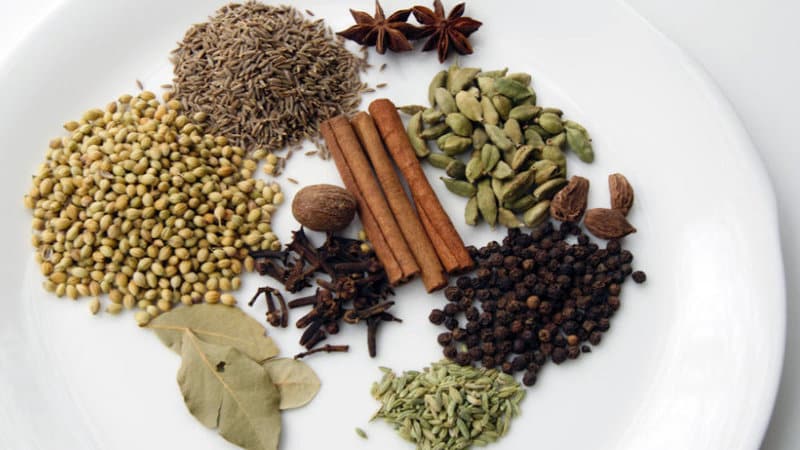
GARAM MASALA, is a dry spice blend widely used in Indian cuisine, it is used in anything from curries and lentil dishes to soups.
It is made from whole spices of cinnamon, mace, peppercorns, coriander seeds, cumin seeds, and cardamon pods. The seeds are dry roasted in a pan to release their aromatic flavors and then ground to a fine powder.
What is the difference between Garam Masala and Curry Powder?
One of the key differences between these two spice mixes is the fact that garam masala is not based on turmeric, which is one of the main ingredients in many curry powder variants.
Garam Masala has a sweeter taste when compared to curry powders and usually includes cinnamon, nutmeg, and cardamom along with many other spices.
Benefits of Garam Masala
Garam masala is full of antioxidants which help in preventing skin problems and also helps to fight inflammation. According to Dr. Rupali Dutta, garam masala has carminative properties (relieves flatulence) and apart from boosting digestion, it also helps in fighting bloating, flatulence and even nausea.
Do you add Garam Masala in near the beginning of your cook, or near the end?
Now this is something which is completely down to you, the curry chef.
We recently held a survey on our Curry Lovers Group on Facebook, and around 1/6 of the respondents voted that they add their Garam Masala near the end, and 4/6 voted that they add their Garam Masala in the beginning of the cook and 1/6 said that they do not use Garam Masala in their curries.
What happens if I add too much Garmam Masala?
If you add too much Garam masala it will make your food bitter, mainly due to the cardamon and cumin.
The best way to try and rescue your dish, is to add some sort of sweetener. I guess the South African’s will add some Mrs Balls Chutney, which is a much loved national treasure.
How do I make my own Garam Masala at home?
Watch the video below to learn how to make your own Garam Masala at home.
